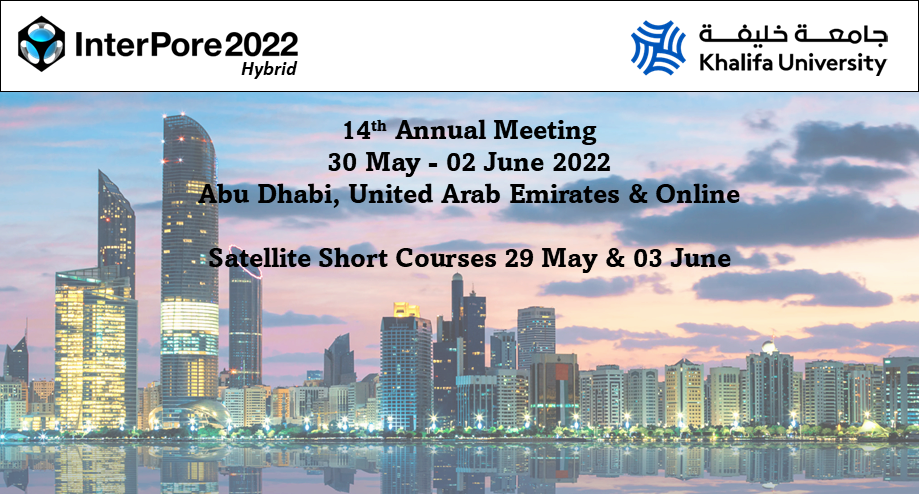Pore-scale dynamics of one phase flow commonly involves adherence (no-slip) boundary conditions at the fluid/solid interface. However, improved modeling such as flows at moderate Knudsen numbers (i.e. for values below 0.1), or homogenization of rock matrix roughness, may require slip conditions [1,2]. It turns out that a lack of knowledge on the rock matrix wall, built by X-Ray micro...
Relative permeability and capillary pressure saturation functions are key uncertainties to characterize multiphase flow in porous media. Therefore, typically a lot of resources are spent on measuring these key functions for various operations. Despite the effort and time, it is not yet common practice to forward simulate or numerically match SCAL data to reliably extract relative permeability...
In enhanced oil recovery (EOR) processes, foam can be injected into the porous media to reduce gas mobility and increase the recovery factor. Mathematical models of foam injection involve many parameters controlling the complex physics of this process. The quantification of uncertainties in a model is essential for developing robust simulators. However, neglecting some parameters during this...
Multiscale domain decomposition methods have proven to be a reliable way for solving single and two-phase flows in porous media. Among the advantages, the possibility to speed up the parallel simulation of huge domains with nearly ideal performance, is perhaps the most useful for applications in uncertainty quantification. However, in applications such as petroleum reservoir simulation, a more...
The Multiscale Perturbation Method for Two-Phase Flows (MPM-2P, [1]) is a procedure based on the Multiscale Perturbation Method (MPM, [2]) that uses classical perturbation theory to efficiently approximate velocity fields in the numerical solution of two-phase flow problems. We consider an operator splitting strategy, where a scalar conservation law for the saturation of one of the phases and...
We use subsurface characterization to describe porous media properties, such as permeability and porosity. One of the main challenges in the characterization is that we need to deal with a large dimension of the stochastic space. It is a common practice to apply a dimensional reduction method, such as a Karhunen-Loeve (KL) expansion, to the prior distribution in a Bayesian framework to make...
While Gaussian models have been used to describe spatial heterogeneity of hydro-geological attributes, the Generalized sub-Gaussian (GSG) model introduced by Riva et al. (2015) has been shown to be able to capture heavy tailed marginal distributions and simultaneous leptokurtic scaling of increment distributions of a broad range of hydrogeological variables. In this context, it can be noted...
Geomechanical simulators aim at predicting the irreversible deformation taking place in hydrocarbon and CO2 reservoirs to optimise profits and reduce risks associated to the exploitation of chalk fields. In the context of compaction studies, accurate forecasting of the plastic strain relies on well-calibrated constitutive equations to capture the mechanical response of rocks according to,...
CO2 storage in subsurface is one of ways to mitigate the CO2 emissions in many places including Kazakhstan . To achieve the goals to achieve the 25% emission reduction strategy by 2030 according to Paris agreement in 2016, Kazakhstan may require additional actions to be performed. CO2 sequestration is one of the possible solutions in the reduction of CO2 emission.
In this work, we explore the...
See attached pdf file









